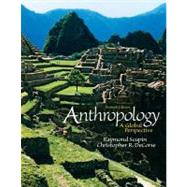
In This Section:
I. Author Bio
II. Author Letter
I. Author Bio
Raymond Scupin is Professor of Anthropology and International Studies in Lindenwood University. He received his B.A. degree in history and Asian studies, with a minor in anthropology, from the University of California- Angeles. He completed his M.A. and Ph. D degrees in anthropology at the University of California-Santa Barbara. Dr.Scupin is truly a four-field anthropologist. During graduate school, Dr. Scupin did archaeological and ethnohistorical research on Native Americans in the Santa Barbara region. He did extensive ethnographic fieldwork in Thailand with a focus on understanding the ethnic and religious movements among the Muslin minority. In addition, he taught linguistics and conducted linguistic research while based at a Thai University.
Dr.Scupin has been teaching undergraduate courses in anthropology for more than 30 years at a variety of academic institutions, including community colleges, research universities, and a four-year liberal arts university. Thus, he has taught a very broad spectrum of undergraduate students. Through his teaching experience, Dr.Scupin was prompted to write this textbook, which would allow a wide range of undergraduate students to understand the holistic and global perspectives of the four-field approach in anthropology. In 1999, Dr.Scupin received the Missouri Governor’s Award for Teaching Excellence.
Dr.Scupin has published many studies on his ethnographic research in Thailand. He recently returned to Thailand and other countries of Southeast Asia to update his ethnographic data on Islamic trends in that area, an increasingly important topic in the post 9/11 world. He is a member of many professional associations, including the American Anthropological Association, the Asian Studies Association, and the Council of Thai Studies. Dr, Scupin has recently authored Religion and culture: An Anthropological Focus and Race and Ethnicity: An Anthropological Focus on the U.S. and the World, and Peoples and Cultures of Asia, all published by Prentice Hall Press.
Christopher DeCorse is Professor and Chair of the Anthropology Department at the Maxwell School of Syracuse University. He recieved a Ph.D. from the University of California, Los Angeles in 1989.
Dr. DeCorse is an archaeologist with research interests in culture contact and change, material culture studies, and general anthropology. His primary area of research has been in the archaeology, ethnohistory, and ethnography of sub-Saharan Africa. His field experience includes sites in the Gambia, Ghana, Ivory Coast, Liberia, Mali, Sierra Leone, Senegal and Togo. His most recent archaeological research has focused on the African settlement at Elmina, Ghana, the site of the first and largest European trade post established in sub-Saharan Africa.
His other principal publications include the Record of the Past: An introduction to Physical Anthropology and Archaeology (Prentice Hall 2000), West Africa during the Atlantic Slave Trade: Archaeological Perspectives, edited (Leicester University Press 2001), and An Archaeology of Elmina: Africans and Europeans on the Gold Coast (Smithsonian Institution Press 2001).
II. Author Letter
Dear Colleague
We would like to introduce you to some of the new features in the seventh edition of Anthropology: A Global Perspective. This textbook was inspired by one of the first anthropology textbooks published by Pearson Education authored by the late Eric Wolf who emphasized that anthropology has always been scientific and humanistic. Wolf said that "anthropology is both the most scientific of the humanities and the most humanistic of the sciences." (1964:88). We think that this perspective is as relevant today as ever before. Eric was kind enough to offer suggestions in developing the first edition of this textbook and we have continued to emphasize his holistic and global focus. We emphasize what we call the "synthetic-complementary approach" that views the scientific method and the methods within the humanities as complementary and suggest that both perspectives are needed to understand human behavior and cultures.
To achieve our holistic and global focus with coverage of both the classic and the most current research in anthropology, we have had the assistance of many anthropologists who have used and reviewed our textbook for this seventh edition. We have updated and refined all of our chapters, drawing on the most current research.
We invite you to consider this new edition of Anthropology: A Global Perspective to introduce your students to the most current, interesting, and exciting research in our field. You will be able to demonstrate how important anthropological research is to understanding the human condition in the past and the present.
Sincerely Yours,
Raymond Scupin
Lindenwood University
rscupin@lindenwood.edu
Christopher DeCorse
Syracuse University
crdecors@maxwell.syr.edu
BRIEF TABLE OF CONTENTS:
Part I: Basic Concepts in Anthropology
Chapter 1: Introduction to Anthropology
Chapter 2: The Record of the Past
Chapter 3: Evolution
Part II: Physical Anthropology
Chapter 4: The Primates
Chapter 5: Hominid Evolution
Chapter 6: Human Variation
Part III: Archaeology
Chapter 7: Paleolithic Cultures
Chapter 8: The Origins of Domestication and Settled Life
Chapter 9: The Rise of the State and Complex Society
Part IV: Basic Concepts of Culture and Society
Chapter 10: Culture
Chapter 11: The Process of Enculturation: Psychological and Cognitive Anthropology
Chapter 12: Language
Chapter 13: Anthropological Explanations
Chapter 14: Analyzing Sociocultural Systems
Part V: Studying DIfferent Societies
Chapter 15: Band Societies
Chapter 16: Tribes
Chapter 17: Chiefdoms
Chapter 18: Agricultural States
Chapter 19: Industrial States
Part VI: Consequences of Globalization
Chapter 20: Globalization, Culture, and Indigenous Societies
Chapter 21: Globalization in Latin America, Africa, and the Caribbean
Chapter 22: Globalization in the Middle East and Asia
PART VII: Anthropology and the Global Future
Chapter 23: Race and Ethnicity
Chapter 24: Contemporary Global Trends
Chapter 25: Applied Anthropology
The New copy of this book will include any supplemental materials advertised. Please check the title of the book to determine if it should include any access cards, study guides, lab manuals, CDs, etc.
The Used, Rental and eBook copies of this book are not guaranteed to include any supplemental materials. Typically, only the book itself is included. This is true even if the title states it includes any access cards, study guides, lab manuals, CDs, etc.